#Myers-Briggs and Jungian Cognitive Functions
Explore tagged Tumblr posts
Text
anyone else interested in mbti and jungian cognitive functions? drop your profiles, i would love to connect with you all !! :)
5 notes
·
View notes
Text

Grantian “Functions” vs Hekatior Deep Processing: Clearing Up the Confusion
There’s a lot of misunderstanding in the typology community about what Grantian “functions” really are and how they compare to Hekatior’s deep processing layers. This post aims to clarify those differences, highlight key historical context and explain why Hekatior represents a genuine evolution beyond Grantian “function” clusters.
What Are Grantian “Functions”?
Grantian “functions” are essentially clusters of traits corresponding roughly to MBTI temperament dichotomies — for example Grantian "Ne" = NP traits. The Grantian system was initially popularized online by theorists like Linda Berens and John Beebe, but its origins trace back to an old religious book (a fact often overlooked) written by Harold Grant.
Grantian “Functions” in Relation to Hekatior Processing Layers
For this analysis I’m considering patterns of Grantian “functions” as they appear in the top two of Grantian types such as Grantian "NeTi" (= NP traits + TP traits):
Grantian "Ne" = NP traits. Tend to be an intuitive lead in Hekatior — meaning the psychological function of intuition operates fully without restrictions. This accounts for the divergence and idea generation often associated with Grantian "Ne" = NP traits.
Grantian "Ni" = NJ traits. Tend to have intuition auxiliary in Hekatior — meaning intuition supports the demands of a main rational frame (thinking or feeling). This explains the planning and convergence themes often associated with Grantian "Ni" = NJ traits.
Grantian "Se" = SP traits. Tend to be a sensation lead in Hekatior.
Grantian "Si" = SJ traits. Tend to have sensation auxiliary in Hekatior. Interestingly enough a differentiation pattern of equjective rational lead with sensation auxiliary is quite common in Enneagram Type 6, explaining the SJ stereotypes of Type 6 in the typology community.
Grantian "Te" = TJ traits. Tend to be thinking lead in Hekatior.
Grantian "Ti" = TP traits. Tend to have thinking auxiliary in Hekatior.
Grantian "Fe" = FJ traits. Tend to be feeling lead in Hekatior.
Grantian "Fi" = FP traits. Tend to have feeling auxiliary in Hekatior.
Why Does This Matter?
Grantian “functions” are not Jungian functions in the full dynamic sense. They are static clusters that often miss the deep interplay and fluidity of psychological processing.
Hekatior: Trialectified Expansion to Jung for the Modern Psyche
Hekatior offers a trialectical layered understanding of psychological processing. It reveals how preferred action responses, preferential orientation and the four psychological functions — intuition, thinking, sensation and feeling — interact dynamically in ways Grantian “function” clusters just cannot capture.
This difference is crucial for anyone serious about typology and personality theory—conflating these systems leads to misunderstanding and misapplication.
Isabel Myers Briggs herself was an INFJ in denial who self-typed as "INFP", while still resonating with being a feeling lead in Jung’s original work. She had to change definitions and psyche libido dynamics to justify her “INFP” self-type narrative, essentially screwing up all the introverts in her lipstick service to Jung.
For example official MBTI® INFJs (correctly typed by dichotomies) tend to be more of IF(N) in Classic Jungian type grouping, whereas Myers labeled INFJs "Ni" dominant. Conversely official MBTI® INFPs (correctly typed by dichotomies) tend to be more of Classic Jungian IN(F) type grouping while Myers labeled them "Fi" dominant.
Harold Grant built his misleading EIEI/IEIE model on such misunderstanding by Myers Briggs—switching the third letter from Myers’ EIII/IEEE stacks—probably because he thought the Myers stack was too unbalanced. But Jung’s ideas represent a fluid developmental model rather than fixed stacks. If anything, Jung's concepts align more closely with what we now call Nucleus Stacks (EEII/IIEE) as the natural default leanings — where the top and bottom halves of the psyche dynamically influence each other for balance. Jung never imposed rigid stacks; the Nucleus Stack EEII/IIEE pattern best reflects the organic interplay he described.
At the end of the day MBTI® pays lip service to Jung but is in practice a sum-of-parts labeling exercise. For example, official MBTI® ENTP encompasses all things E, N, T, P and respective combinations (EN, ET, EP, NT, NP, TP, ENT, ENP, ETP, NTP, and ENTP) have in common. Personality Café’s Reckful was spot-on about that.
Historical Context and Criticism
Reynierse, in his analysis The Case Against Type Dynamics, dismantled the Type Dynamics theory - highlighting the lack of empirical support for Grant’s hypothesis. Nonetheless the Grantian model became popularized online by figures like Berens and Beebe, spreading like a wildfire.
It’s your prerogative to use the Grantian model if you wish, but don’t mix systems or you’ll pretty much mistype everyone.
Hekatior expands the true depth and complexity of Jung’s insights, avoiding reductionist categorizations.
Conclusions
If you want to deepen your understanding of typology beyond surface-level Grantian "function" labels, exploring Hekatior’s deep processing layers is the next step. It respects Jung’s original vision while expanding it with a trialectical framework — something Grantian “function” clusters can’t offer.
© 2023 - present Alessio David Ricioppo Parra (The Enneamentalist). All rights reserved.
#jungian psychology#carl jung#hekatior#mindset#mbti#myers briggs#cognitive functions#entp#enfp#entj#estj#enfj#esfj#estp#esfp#intp#infp personality#intj#istj#infj#isfj#istp#isfp#typology#youtube#social media
0 notes
Text
How to Interpret Sakinorva MBTI Test Results
Introduction
People (myself included) often recommend the Sakinorva Cognitive Functions test to help them determine their MBTI type. This test determines which functions you're using and how strongly you use them. Based on this information, it will suggest some MBTI types that you are likely to be based on a few different methods of analysis (described later).
This is test provides a wealth of information and data that can be used to discern your type, but it can still be a little confusing interpreting all of these results. And despite how well thought out this test is, like all MBTI tests, it is imperfect and subject to error, further suggesting that the best way to determine your type is through knowledge of self, and knowledge of cognitive functions.
As someone who has studied MBTI for many years, I am confident in my type being an INTP, but even with this confidence, my top test results was not INTP.
Here, I will analyze my own test results and discuss some common points of confusion that people encounter like if your results indicate that you strongly use some cognitive functions that are different from the function stacks outlined by Myers and Briggs for the type you've been assigned. For example, you're an ENFJ, but your results indicate that you strongly use Ni (expected), and Ne (unexpected). I will explain how to interpret results like these, and other confusing examples, as well!
Results & Discussion
Figure 1.
A screenshot of my Sakinorva test results.
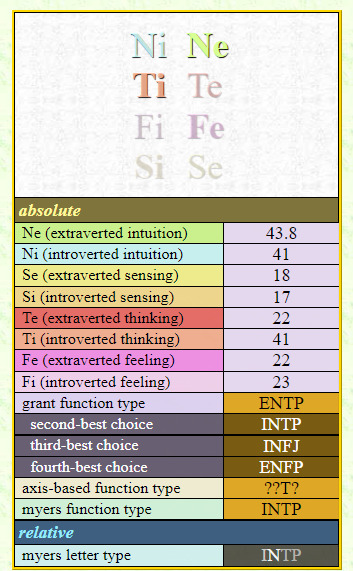
We see that each cognitive function has been assigned a number that has been calculated based on how strongly I preferred to use that function. The higher the number, the more strongly I preferred the function.
The first step I take when interpreting these results is to first put the functions in order from most preferred to least preferred to see if the order resembles any of the known function stacks for any of the 16 types.
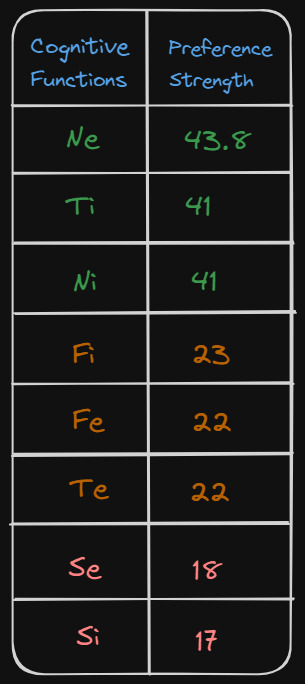
Grant/Brownsword Function Type Results
The Grant/Brownsword model - though untrue to Grant's definitions for the types and their functions in From Image to Likeness: A Jungian Path in the Gospel Journey and those of Brownsword's in It Takes All Types! and Psychological Type: An Introduction, this test tries to reconcile the type development stack first proposed by Grant with the more Myers-centric (as opposed to Jung-centric) definitions for the functions used by the typology community today.
Best choice: ENTP
From here, it's pretty clear that my top cognitive function is Ne, with Ti and Ni coming in a tie for second. My top type result is ENTP because the strongest cognitive functions for ENTP are Ne and Ti in that order. This just goes to show that even some of the best tests you can take can still give you an incorrect result. We'll talk about the high Ni in another section. Granted, the second-best result is INTP, which is my actual type, but if I was new to MBTI and didn't know my type yet, I wouldn't know any better!
The full ENTP function stack is Ne-Ti-Fe-Si. Looking at the preference values, we see that on this test, they did manifest in that order of strength/preference 43.8-41-22-17. This information in combination with my very clear preference for Ne and Ti over most other functions is why the top result was ENTP.
Second-best choice: INTP
The INTP function stack is Ti-Ne-Si-Fe, which is very similar to ENTP (same functions, slightly different order). INTP is suggested as the second-best choice because my Ti-Ne and Si-Fe preference values are very close in number, that if I retook the test again, it is reasonably likely that the order of preference could change to reflect the INTP order of functions. Because I have studied MBTI for some time, I know that this is actually the case, and that for whatever reason, I was feeling particularly perceptive (as opposed to feeling more decisive) when I took this test, and scored slightly higher on Ne instead of Ti as a result.
Third-best choice: INFJ
Now this is suggested because I tested as having high Ni in addition to high Ne and high Ti. Because INFJ’s function stack is Ni-Fe-Ti-Se, there is a (weak) argument that can be made for me being an INFJ because the high Ni coupled with Ti could indicate an INFJ who is skipping over their auxiliary Fe (aka a “jumper type” as I’ve heard them called). This is less likely because INFJ’s naturally use high Fe and my Fe scores as low as Te and Fi which aren’t even in the INTP function stack.
This is a confusing hurdle that a lot of people come across with function tests. How can you score high in Ne and Ni? Or high in Ti and Te etc.. This is because when answering questions, you will still tend to prefer the function that aligns with your dichotomy as opposed to its opposite. I do not typically use Ni according to my function stack, BUT given the choice between Ni and Si or Se, I will always choose Ni because it is more similar to Ne than Si or Se are. So if you take one of these tests and score high in both extroverted and introverted forms of the same cognitive function (aka opposite attitudes of the same function), it is most likely that you prefer only one of them, and scored high in the other as an scientific artifact
Fourth-best choice: ENFP
ENFP's function stack is Ne-Fi-Te-Si. I received this result most likely because the test indicated Ne as my strongest function (and Si as the weakest). Since ENFP is the only type other than ENTP with this cognitive function pattern, ENFP is a natural fourth choice. I scored very low on both Fi and Te, which is why ENFP isn't higher on the list of possible choices.
Axis-based function type: ??T?
The axis-based model - this algorithm uses preferences for function axes to arrive at a type, a practice commonly used by magicians and typologists today.
Honestly, why it was only able to type me as a thinker and nothing else is confusing to me. I had exclusively high Ti, so it seems like it should be able to type me as an xxTP. I can see why it would struggle with typing me as xNxP based on the Ne-Si function axis or as xNxJ based on the Ni-Se axis because I had both high Ne and high Ni according to these results. There is very little information about this typing method outlined on their website
Myers function type: INTP
The Myers model - this algorithm stays as true as possible to how Isabel Myers had envisioned function orientations in her types, especially emphasizing the importance of the extraverted functions in determining type. (I may later expand on this in the FAQ.)
It is unclear to me how I received INTP as a result if it is based off of the Isabel Myers' interpretation with the order of function stacks that I have been outlining through this guide so far, especially since Ne was my strongest function in these results, and therefore, should be ENTP. Perhaps I have misunderstood these results somehow. Either way, this is another example of how there is often confusing/contradicting/incomplete information regarding cognitive functions and the tests that measure them.
Myers letter type: INTP
The Myers letters - this test also attempts to calculate your '16 personalities' type through a careful examination of each question and how it would correlation with each of the eight preferences; though roundabout and based only on theoretical correlations, it is reasonable to assume that this result will be more accurate than the previously mentioned algorithms in determining your Myers letter type.
I do not remember how I answered questions that only tested the letters instead of specific cognitive functions, but it appears that I at least answered enough introverted questions to receive INTP for this result. Not much more can be said about this because Fig. 1 only shows the strength of specific cognitive functions, not the metrics for the 4 possible letters.
Conclusions
While this cognitive function test is considered one of the more reliable ones, there are still some limitations including question-phrasing and user-error that can produce inaccurate results even for someone like me who has been studying MBTI for many years who already knows their type.
Test-related Error
Questions measuring the same function with opposite attitudes to both be strongly used because they are being compared to the opposite function of both attitudes that are likely both weak functions. In this example: High Ne and Ni because I always chose intuitive perception of sensing.
User-related Error
Answering questions based on how you currently thinking/feeling, instead of your overall established pattern of thinking/feeling over the course of your lifetime.
Answering questions based on how you would like to think/feel, instead of how you actually think/feel
Over-thinking what a question is asking and answering it in a way that does not reflect your true attitude because you've misunderstood the prompt.
All in all, if you can minimize the user-related errors by getting to know yourself, being honest with yourself about who you are, and answering questions based on how you initially interpret the question before you can overthink it, then you should be able to get a mostly accurate MBTI result.
While INTP may not have been my best choice according to this test, it was still my second choice, so if I truly didn't know my type at this point, my true type was listed as number 2, which is pretty good, overall! It would just require a little bit of introspection on my part and learning more about the functions to come to the most accurate conclusion myself.
32 notes
·
View notes
Note
ok so i was the one who asked abt the how can u be infj but also nifi, so you're typing yourself using the original jungian method when you say that and not the myers briggs. what i'm getting is that according to jung, it's not necessary for the second function to be extraverted or introverted, so an niti is intj, as well as nite? or tini and tine? I wanna know if i got it correct!
Yes, pretty much, I’m not a huge fan of Myers-Briggs’ theory, so I tend to use Jungian in general while still referring to myself as an INFJ because honestly it's just more convenient. She got a bunch of the theory wrong, such as the judgement/perceiving or rational/irrational dichotomy, but I'll get back to that later. Loops, or the idea that NiFi would be INTJ isn't something Myers-Briggs ever mentioned either, this is an idea that was created on tumblr itself as far as I'm aware, same as grips. Jung didn't really value the introversion or extroversion of the secondary function, as a person's cognition is either gonna have a preference for introversion or extroversion regardless. To Jung's theory, the dichotomy between secondary feeling/thinking and sensation/intuition depending on the dominant function is much more important than that between its extroversion or introversion. So getting back to the weird thing with the irrational/rational dichotomy in mbti. Myers-Briggs decided this based on the first extroverted function, which is weird, because that makes types with an irrational (perceiving) function, such as Ni, rational and vice versa. If you've ever looked into socionics, this might sound familiar to you, as the socionics types, written in mbti format, don't use the Myers-Briggs switcheroo, and stay true to Jung's theory in that sense. So if you want to get technical, TiNe and TiNi are INTJ, but considering more people study mbti than Jungian or socionics, it's often far more convenient to just stick with INTP for TiNx and INTJ for NiTx.
25 notes
·
View notes
Text
Buenos dias!
You can call me YesMan (He/Him) Art (when there is any) on @youryesmandraws Talk to me about: Cyberpunk 2077 or RED, Disco Elysium, Dragon Age, Baldur's Gate, Fallout, Monster Manga, Attack on Titan, The Boys, BCS or BB, Jungian cognitive function stacks (u may know as myers-Briggs type indicator: similar finish, different juice)
Dragon Age was my worldbuilding drug of choice but events occurred. Now Martinaise and Night City are my best friend. Have almost breached 750 hrs on Baldur's Gate 3. It's okay I guess.
2 notes
·
View notes
Text
Can highly intelligent people have multiple MBTI types?
Quora Post:
(For this answer, I’ll be referring to Carl Jung’s theory, and not Myer-Briggs’. A crash-course on Cognitive functions and Cognitive function stacks here;
Timothy Emmanuel Lim's answer to Can you explain each of the cognitive functions (Fe, Ni, Ti, etc.) in an easy to understand way?,
Timothy Emmanuel Lim's answer to What are the different "stacks" of the Myers-Briggs personality types and what do they mean?
Which will catch you up to speed enough to understand the slight jargon used here.)
Originally, a few months ago, I would’ve said the question’s premise is false, but after people whom I know stated that I felt a lot like an INTP (which I found out the perpetrator was an unusually high Ti), I researched and noted that people of a higher IQ also tend to fit less riveted into their type analysis than people of an average IQ. It felt as if the more intelligent you are, the more versatile and encompassing your Jungian type is.
The answer to this question is actually more complicated than a simple ‘Yes’ or ‘No’, in which I’ll have to elaborate on with quite a bit of background information.
By definition, the answer is No. You can only be a single type, because the type you’re defined by is the single thought process you use the most; using the 8 cognitive functions in a certain order.
Everyone, regardless of type — possess all 8 cognitive functions. It’s just to what degree is it honed, and how much can or do we use
However, depending on the interpretation of this question; seeing that the 16 types are actually thought-processes and “states” of thinking, all of us can possibly access all 16 variations of orders of these “thought-processes”. On occasion, we can act as any of the 16 types.
But this information isn’t substantial enough as to what or how and people possess two or more modes of thinking.
Dario Nardi’s research shows that the 8 Jungian functions can coincide with people’s cognition and regional flares of the brain. He did this by performing Electroencephalogram (EEG) scans on the sample 16 types, as shown here.
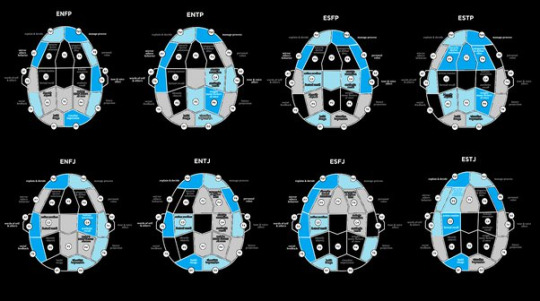
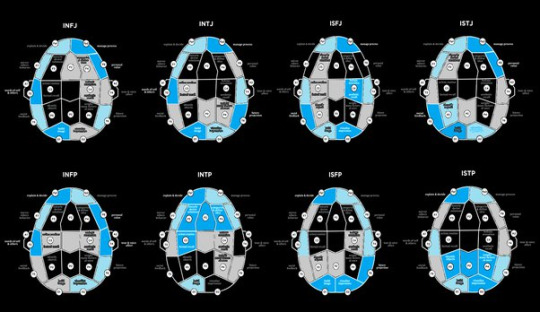
Several times, two or more regions fire together, simultaneously, from once every second up to once hourly. Eg. Whenever somebody listens in a conversation;
Two key auditory regions fire in sync.
The person is keenly attentive to both verbal content (speech, literal meaning) as well as the tone of the voice, never one or the other.
There is a neural connection between both lit regions which will engage in an electrical signal exchange.
Likewise, these charts exemplify and depict precisely which regions in the cranium of each Jungian type lights up most commonly. And because certain types extensively use specific parts of the brain, these parts are likely to be developed more than the rest of the brain.
~ Timothy Emmanuel Lim's answer to Would a highly gifted INTP make more connections in his brain while a similarly gifted INTJ would rely more on the speed of neural connections?
Which essentially translated to; Each cognitive function is tied in with a certain associated region of the brain.
(And like I’ve stated in the aforementioned answer;) Gifted/high IQ individuals tend to be of 1 and/or 2 of these characteristics;
Gifted individuals exhibit an even stronger (and developed) use of their already extensive used regions of the brain, or;
The ability to tap into more regions of the brain than others.
Because gifted individuals have certain regions of the brain, either more developed than others, or have more regions developed overall.
Some gifted individuals tend to be region-centric/focused while others tend to be more generally/overall developed.
So, what does this mean?
By extension; the higher your IQ, the more likely developed your cognitive functions are as a person — which means the more intense/focal you can afford to be in a certain way of thinking.
Let’s draw an analogy:
Life is like a Role-Playing-Game.
Each of us are given a certain amount of points from birth. Some of us are (unfairly) given more, some of us are given less.
When we are born (or creating our character), we are allowed to allocate our bank of points to certain allocated skills to start off with. We also start with certain classes which determine our specializations.
It may look something like this;

(Taken from Ragnarok M: Eternal Love)
As you can see, since the birth of the character, every time this player levels up and grows, the player is allowed to allocate points to whichever skill (s)he chooses, just like in the interface.
You and your friend create a character each.
Let’s say you’re a person who has been given the privilege of starting with extra points. Your friend, however, doesn’t. You start off with 160 points and your friend starts off with 100. Both of you choose different classes.
Both of you allocate your points to 8 different skills accordingly. Your skillsets at the end of allocation looks like this;
Class: Berserker
Str: 45
Agi: 35
Ski: 10
Vit: 25
Int: 5
End: 30
Dex: 5
Luk: 5
In this case, you noted that you wanted to make your class slightly more “balanced”, so you redistributed your points from your Strength level and funneled it into your Agility, pumping it up much higher.
And your friend’s;
Class: Thief
Str: 10
Agi: 30
Ski: 20
Vit: 10
Int: 15
End: 5
Dex: 5
Luk: 5
And as you can see; both you and your friend chose radically different classes, with radically different specializations. An average Thief may outclass an average Berserker in terms of agility, but because you were “blessed” with a stronger starting character, your Berserker’s agility exceeds that of your friend’s agility, which is actually his supposed “strength”.
In this scenario; MBTI types are like your classes, points allocated determine proficiency, and our cognitive functions are our skills.
People who are extensively gifted tend to have their cognitive functions more honed overall compared to the average person.
And like the RPG analogy; some people tend to have better grasp over certain cognitive functions (that aren’t in their defined type) than others (who do).
And when coming across a really intelligent person, they may seem to display stronger feats of certain functions eg. Si, over the typical ISTJ, which this intelligent person may give you the impression that he’s an Si-dominant in that moment. What shocks you however, is how this Si-dominant intelligent person, isn’t actually an Si dominant, but a Ne-dominant; a really gifted ENTP.
Or another gifted person who is somehow, all-rounded in most cognitive functions — hence this person can switch back-and-forth into many different states, which may strike you off as someone who has multiple personalities.
However, no matter how gifted — one will have a go-to default state, like in an RPG where someone has a default class, which still remains true, no matter the deviation or special honing of very specific abilities.
So an average INTP in an EEG may look like this;
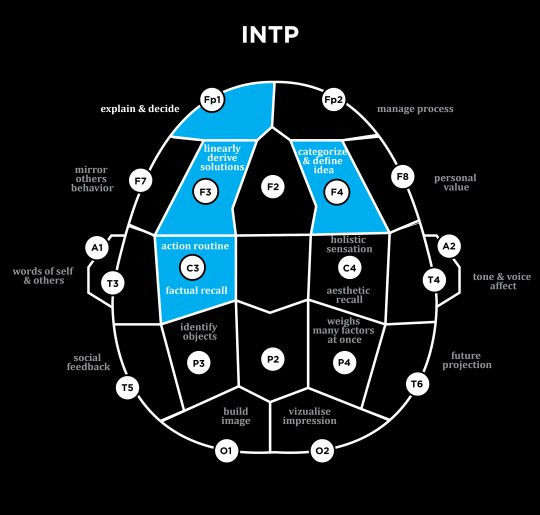
But an extensively gifted INTP’s EEG may look this;
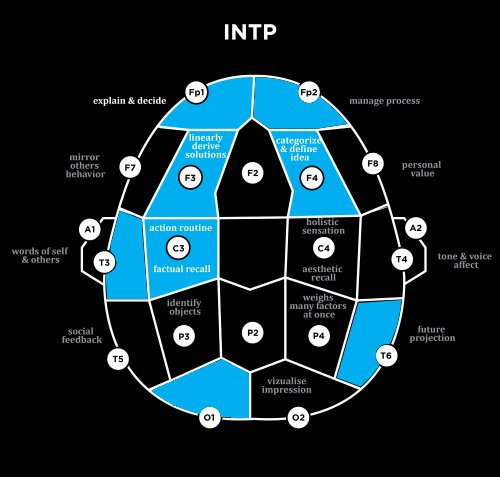
Which upon close inspection, looks like it covers overlapping areas of;
An average INTJ;
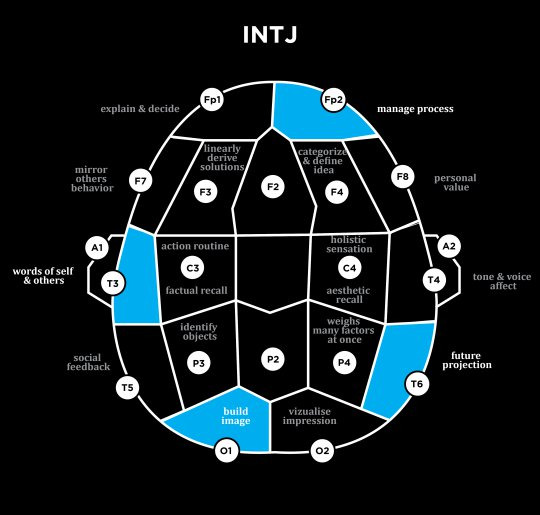
Thus, the gifted INTP will display characteristics that an INTJ often does, too.
This proverbial INTP doesn’t just have a very high Ti and Ne, but probably a very high Ni and Te as well, making him a very hybrid thinker.
So, to answer your question;
Can highly intelligent people have multiple MBTI types?
By definition, no. But by extension of cognitive function use; a highly intelligent person can behave as multiple types.
Because highly intelligent people have extraordinarily developed brains; which certain further-developed regions can easily correspond to certain cognitive functions.
This is why you’ll sometimes find a highly developed Thinker type seem more like a more mature feeler than a less developed Feeler type, etc.
And sometimes, certain high IQ individuals may identify (in Jung, not so much MBTI) as more of an eg. xNxP than a straight INTP or ENFP etc.
Because Jungian theory is the measurement of what kind of cognitive functions you use more; not how much you use them, as compared to others.
Conclusion: Some highly intelligent people can access more thought-processes intensively than others — which is why they may seem like they have more than 1 MBTI type.
Some highly intelligent people may also be more specialized in their cognitive functions and cranial regions, so not all highly intelligent people may be all-rounders per se.
3 notes
·
View notes
Text
[MBTI General] Physical intelligence and MBTI type
Do you think their is a relation between MBTI and physical intelligence (the one ability to controle their body movements)? If so, according to your observations, which personalities were more physically intelligent than the others? Or were called as "genius in body controle". https://www.typologycentral.com/forums/showthread.php?t=97808&goto=newpost&utm_source=dlvr.it&utm_medium=tumblr
12 notes
·
View notes
Text
Basic Cognitive Functions Guide
As an MBTI enthusiast, I like making little guides and notes to help me visualize and process information, so here ya go!
MBTI is commonly known by the 4 letter code (INFP, ESTJ, etc), popularized by 16personalities.com. But its origins come from Carl Jung, who created the cognitive functions that make up the code! My type is ISTP based on the cognitive functions theory :)
Two Attitudes
Extroverted (E): Functions oriented towards the real world—views things as is without personal alignment and filtering. "Breadth."
Introverted (I): Functions oriented towards the subject's world—views things through personal alignment and filtering. "Depth."
Two Categories
*Judging
Judging Function (Jx): Reason—a cause, explanation, or justification for an action or event—used to judge and decide.
Extraverted Judging (Je): Reasoning based on external effects. Looks at what should be.
Introverted Judging (Ji): Reasoning based on internal alignment. Looks at personalized principles.
*Perceiving
Perceiving Function (Px): Processes used in gathering or filtering information.
Extraverted Perceiving (Pe): Perceiving based on external exploration. Unfiltered gathering of information.
Introverted Perceiving (Pi): Perceiving based on internal narrowing down. Filtering information.
Four Aspects
*Inter/personal ("emotional"): Human-based matters. *Impersonal ("logical"): Nonhuman-based matters.
Feeling Functions (Fx): Judgment metrics oriented towards people and inter/personal matters. Emotional reasoning.
Thinking Functions (Tx): Judgment metrics oriented towards things and impersonal matters. Logical reasoning.
Intuition Functions (Nx): Perceiving processes oriented towards intangible information. Abstract perception.
Sensing Functions (Sx): Perceiving processes oriented towards tangible information. Concrete perception.
Eight Cognitive Functions (putting it all together)
*Judging Functions:
Extraverted Feeling (Fe): Reasoning based on external inter/personal effects—emotional consequences. "What should be valued."
Extraverted Thinking (Te): Reasoning based on external impersonal effects—logical consequences. "What should work."
Introverted Feeling (Fi): Reasoning based on internal inter/personal alignment—emotional particularities. "What feels right to me."
Introverted Thinking (Ti): Reasoning based on internal impersonal alignment—logical particularities. "What makes sense to me."
*Perceiving Functions
Extraverted Sensing (Se): Perceiving based on external concrete exploration—unfiltered gathering of tangible information. "What is."
Extraverted Intuition (Ne): Perceiving based on external abstract exploration—unfiltered gathering of intangible information. "What if."
Introverted Sensing (Si): Perceiving based on internal concrete narrowing down—filtering tangible information. "What has been."
Introverted Intuition (Ni): Perceiving based on internal abstract narrowing down—filtering intangible information. "What will be."
I made this based on my understanding of Psychological Types by Carl Jung. Click here if you'd like to view the guide in a different format and see the direct quotes I used from Jung's book.
#mbti#carl jung#cognitive functions#myers briggs#fe#te#ti#fi#se#ne#si#ni#guide#typology#16 personalities#jungian theory#op
254 notes
·
View notes
Text
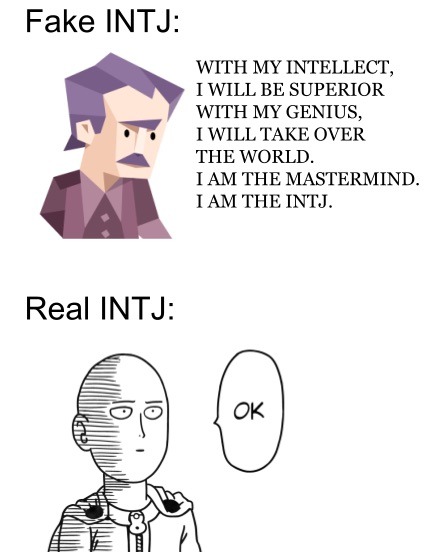
#intj#intj thoughts#mbti#mbti intj#16 personality types#myers briggs#16 types#jungian#intj memes#cognitive functions
102 notes
·
View notes
Text
okay so here's my question:
"Ni gets to the root meaning of information, the abstract-yet-universal meaning behind stimuli. Ni finds a singular, subjective, and often idealistic or outlandish meaning behind an external stimuli, allowing the user to extrapolate from this singular point of information-intake in order to act on it. Therefore INxJs and ENxJs often sound kinda crazy because of this intuition, this use of the Ni-focus into the core of an object, its subjective impression on the user, rather than its immediate concrete application."
DOESN'T EVERY SINGLE FRICKING PERSON DO THAT??? THIS TELLS ME NOTHING?!
#mbti#mbti things#mbti stuff#16 personalities#intj#entj#infj#enfj#istj#estj#esfj#isfj#cognitive functions#ni#ni vs si#se#jungian typology#carl jung#myers briggs#se vs ne#sensors#intuitives#jungian functions#typology#mbti thoughts#mbti personality types
106 notes
·
View notes
Text
The Issue with 16personalities
A brief explanation on why 16personalities is unreliable





#mbti#myers briggs#jungian theory#carl jung#cognitive functions#mbti cognitive functions#rainymbti#everytime an idol uses 16personalities a part of my soul dies#like pls#idk how to tell them to NOT use it#it's cool that so many of them like mbti now but#not 16personalities naur#how to tell idols to look into cognitive functions#kpop#kpop mbti
13 notes
·
View notes
Text
lmao 16personalities tiktok is such a mess
3 notes
·
View notes
Text
Myers Briggs Cognitive Functions (How To Figure Out Your Myers Briggs Type)
It’s been awhile since I posted on here, but I wanted to post something that would be helpful. Often on the internet I see a lot of misconceptions about the Jungian cognitive functions, so I wanted to try and create more compact summaries of the functions as Jung described them. I’m currently waiting for my WikiHow article on how to figure out your cognitive functions to get approved (if it ever will), so for now I’ll just write out what I wrote for the article here.
I also added some extra notes for beginners on the bottom if you are completely new to typology and confused about what any of this means.
Without further ado, I’ll now get into the summaries.
Introverted Feeling. Jung describes introverted feelers as 'Still waters run deep' type of people. They are quite silent and inaccessible, and can be rather difficult to understand. They often act childishly or banal, and sometimes quite melancholic. They don't tend to shine, and rather keep a type of concealed air about themselves. They don't wish to change others or affect others and don't care to impress. People see them as having a sense of indifference or coldness to their behaviors. They prefer not to be emotional, but their emotions often end up infiltrating their unconscious mind. People may see them and not think that they are feeling, but their feelings are intensive rather than extensive. They develop into their depth. When they try to express sympathy, it often looks like coldness despite their intentions, due to it doing nothing visibly. They may express their aim in inconspicuous ways, preferring to put their passions into things silently. Due to this, this type may often be drawn to the arts. This type of person may particularly draw in extraverted types of people. When they are unhealthy, they may become mischievously cruel or unscrupulous in their ambition.
Extraverted Feeling. Jung describes extraverted feelers as people who follow the guiding lines of their feeling. Their personality often adjusts to external conditions, such as the people that they are talking to. Their feelings correspond with objective situations and generalized values. They often have requirements for the people that they tend to date, and these tend to be things that can be measured on an external level. People who value this function highly often repress their logic to make room for their feelings. This does not mean that this person does not think logically at all, and they could easily think a great deal. They just prefer to use their feelings as a guideline and use their logic to back up what they feel. This type of person would be described in the phrase "I cannot think what I don't feel." When this individual is unhealthy, they tend to become a servant to their feelings. These people may have the most obsessive and hideous thoughts during this time, which breeds even further doubt in them therefore furthering the control of emotions onto them.
Introverted Thinking. Jung describes introverted thinking types as being influenced by their subjective logical ideas. They will follow their ideas internally, seeking to understand their logic with intensity. This person may have a distinct feeling that they only matter in a negative way. They often will have an indifference to objective sources and prefer to stick to their subjective ideas. With this person, everything about them externally remains concealed. Their judgment appears cold, obstinate, arbitrary, and inconsiderate, simply because they are less interested in the objective reality than the subjective thoughts. Courtesy, amiability, and friendliness may be present in their behaviors, but they often display this with uneasiness. When it comes time for them to transplant their ideas into the world, they merely expose them and are annoyed when their ideas fail to thrive in objective reality. This person often lacks practical ability, and may even have an aversion to practical matters. If in their eyes their idea seems subjectively correct and true, it must also be in practice, and others have to bow to that truth. Hardly will they ever go out of their way to win anyone's appreciation of their ideas, especially if it be anyone of influence. At their unhealthiest, they may allow themselves to be exploited in negative ways if it means that they can continue their internal pursuit of ideas. Their convictions may become rigid and unbending, and they may become incredibly isolated and dependent on their internal world.
Extraverted Thinking. Jung describes extraverted thinkers as people whose constant aim is to bring their total life activities into relation with their intellectual conclusions. These intellectual conclusions are always oriented by objective facts or generally valid ideas. This type of person gives the deciding voice to objective reality, not only to themselves but to people around them as well. They determine good and evil through this measurement, as well as beauty and ugliness. All is right that corresponds with this formula, and all is wrong that contradicts it, and everything that is neutral to it is purely accidental. The person who refuses to obey this law is unreasonable or immoral in their eyes, and without a doubt has no conscience. Purely ethical aims may lead these individuals into critical situations, which sometimes have more than a semblance of being decided by quite other than ethical motives. These people may find themselves in deplorably compromising situations, or in dire need of rescue in this case. Their resolve to save often leads to them employing means which only tend to precipitate what they most desire to avoid. At their unhealthiest points, their desire to advance the salvation of man is so consuming that they will not shrink from any lying and dishonest means in pursuit of their ideal. They may neglect their health in pursuit of their ideals, even neglecting their family or the people that they care about. They may also become incredibly dogmatic, to a rigid extent.
Introverted Sensing. Jung describes introverted sensing as a type characterized by their peculiarities. They are an irrational type, as they are guided simply by what happens to them. They may stand out by the calmness and passivity of their demeanor, or by their rational self-control. They may have an illusory conception of reality, and in the worst-case scenario may even reach a complete inability to discriminate between reality and their subjective perception of reality. Due to their lack of knowledge of objective reality, they can often appear quite strange and odd in character due to their differing perception from objective reality. When others treat them badly, they may prefer to take a position of stubbornness and resistance than to full out aggressiveness. At their unhealthiest, they are incredibly aware of every ambiguous, gloomy, and dangerous possibility in their reality.
Extraverted Sensing. Jung describes extraverted sensing as a type characterized by their attentiveness to reality. Their sense of objective facts is extraordinarily developed. Their life is an accumulation of actual experience with concrete reality. This person does not believe themselves to be subject to sensation. They would actually ridicule that statement as being inconclusive since, from their standpoint, sensation is the concrete manifestation of life. Their aim is concrete enjoyment in objective reality, and their morality is similarly orientated. For in their eyes, true enjoyment has its own special morality, its own moderation and lawfulness, its own unselfishness and devotedness. This person may have little tendency for either reflection or commanding purpose. When they wish to create in objective reality, they do so aiming to fill their senses. They may be incredibly good at putting together aesthetics, or creating great sensational experiences. At their unhealthiest, they become crude pleasure-seekers or unscrupulous hedonists. They don't see reality as a beautiful thing anymore, but rather something to use to solely feed the endless need for new sensations. They may become incredibly jealous individuals running off of high anxiety. They may even turn morbidly primitive, or extremists in behavior.
Introverted Intuition. Jung describes introverted intuition as producing a peculiar type of person. This person may be a mystical dreamer and seer on one hand, and a fantastical crank and artist on the other. There is a general tendency of this type to confine themselves into the perceptive character of intuition. The intensification of their intuition naturally often results in an extraordinary aloofness of the individual from tangible reality, they may even be a complete enigma to their own immediate social circle. If they are an artist, they reveal extraordinary, remote things in their art. Their art may be lovely and grotesque, or whimsical and sublime. They may have visions, where they think to themselves "What does this thought mean for me and the world? What emerges from this vision for me and the world?" The pure intuitive who represses judgment will never meet this question fundamentally, because their only problem is the how of perception. They concern themselves with the meanings of their visions, and troubles less about its further aesthetic possibilities than about the possible moral effects which emerge from its intrinsic significance. At their unhealthiest, they may become quite impulsive, and struggle with unrestraint. They may also have issues talking to people about their visions, as they are often arguments without convincing reason.
Extraverted Intuition. Jung describes extraverted intuition as producing a person who is always aware where possibilities exist. They have a keen nose for things that have a promising future. They can never exist in stable, long-established conditions because they are always looking for new possibilities. Stable conditions often feel suffocating to them. They take on new subjects with extreme enthusiasm and intensity, only to abandon them cold-bloodedly and seemingly out of nowhere. As long as a possibility exists, this person feels bound to it. They have their own characteristic morality, which consists in a loyalty to their intuitive view of things. At their unhealthiest, they may rely entirely upon a perception of chance and possibilities. They may become incredibly attuned to hazards in their life. They may also become a hypochondriac as their fears and phobias increase.
What do I do now?
Order your functions. You will now need to order your functions from most used to least used. You will want to choose one thinking function, one feeling function, one sensing function, and one intuition function. Then order these based on the amount that you use each of them, from most to least.
In Jungian cognitive functions, there is a rule that each function in your stack has an opposite opposing it.
These opposing functions are thinking & feeling and sensing & intuition. Each person will have one of each function, and they can only have two introverted functions and two extraverted functions. You can't have two extraverted opposing functions, nor can you have two introverted opposing functions. You also can't have two extraverted functions paired right next to each other, or two introverted functions paired next to each other.
An example of this would be the function stack of ISTJ: They lead with introverted sensing, then their auxiliary function is extraverted thinking, then their tertiary function is introverted feeling, then finally their inferior function is extraverted intuition.
Another example is the function stack of ENFP. They lead with extraverted intuition, then their auxiliary function is introverted feeling, their tertiary function is extraverted thinking, and their inferior function is introverted sensing.
Remember that lesser valued functions will not be as apparent in your life. A high introverted thinking user may not relate to the extraverted feeling description of preferring emotion over logic, and that is to be expected. The function you value less is often suppressed for the greater function until you learn to use them in harmony.
Know the names of the cognitive functions.
Each function has a name as well as an abbreviation that is commonly used.
Introverted Feeling, also commonly referred to as Fi.
Extroverted Feeling, also commonly referred to as Fe.
Introverted Thinking, also commonly referred to as Ti.
Extroverted Thinking, also commonly referred to as Te.
Introverted Sensing, also commonly referred to as Si.
Extroverted Sensing, also commonly referred to as Se.
Introverted Intuition, also commonly referred to as Ni.
Extroverted Intuition, also commonly referred to as Ne.
The Types:
ISTJ - Si-Te-Fi-Ne
ISFJ - Si-Fe-Ti-Ne
ESTJ - Te-Si-Ne-Fi
ESFJ - Fe-Si-Ne-Ti
ISTP - Ti-Se-Ni-Fe
ISFP - Fi-Se-Ni-Te
ESTP - Se-Ti-Fe-Ni
ESFP - Se-Fi-Te-Ni
INTJ - Ni-Te-Fi-Se
INFJ - Ni-Fe-Ti-Se
ENTJ - Te-Ni-Se-Fi
ENFJ - Fe-Ni-Se-Ti
INTP - Ti-Ne-Si-Fe
INFP - Fi-Ne-Si-Te
ENTP - Ne-Ti-Fe-Si
ENFP - Ne-Fi-Te-Si
Learning how to narrow types. If you find that you have a function stack that is oddly laid out, such as Ni-Ti-Fe-Se, determine the closest likely type. In the case of those functions, the closest match would be INFJ. In the case where you relate to two extraverted functions of opposing function groups, you must determine which of the two you relate to more. For example, if you relate to both Te and Fe, try to narrow down which you think describes you better and choose the introverted function for the other one.
If you need any further help, feel free to shoot me an ask at any time.
#Myers Briggs#Myers Briggs Help#Masterpost#myers briggs masterpost#myers briggs functions#cognitive functions#jungian functions#carl jung#jungian cognitive functions#myers briggs cognitive functions#MBTI#mbti types#mbti masterpost#mbti cognitive functions#mbti functions#mbti typing#typology#personality types#personality typology#personality typing#istj#isfj#estj#esfj#intj#infj#entj#enfj#istp#isfp
88 notes
·
View notes
Text
so i had a quick lesson on the history? of the theory of ‘cognitive functions’, or in actuality ‘the amalgamation of people’s attempts to break down and categorize thinking preferences over the years’.
yes i was part of the uncultured who thought cognitive functions as the real thing that underlies mbti, jung’s, type theory as a whole. i thought there was a thing called ‘jungian theory’ that was the foundation to all that followed, but a fairly informative article on the evolution of cognitive functions on the sakinorva website has enlightened me to the true state of the matter: mbti is actually very separate from jungian theory.
both these personality-related theories have some allusion, in different extents, to the categorization of thinking processes by means of ‘cognitive functions’. however, the article has pointed out and demonstrated that these theories have quite the difference in how they each define the ‘cognitive functions’ that was supposed to underly their theory. it also does not help that ‘cognitive functions’ is most likely an abstract construct that cannot readily be empirically proven, while subjective reports will tend to be inconsistent and easily influenced by other factors of personality.
this made me kinda lose hope for a few minutes because *then what’s the point of personality science* but surely, perhaps, there is a point in trying to logically understand thinking preferences. because surely people think differently, and also simlarly, and knowing what thinking mode you prefer would help you find out what activities you would potentially have an easier time doing, just like how physical traits play a role in certain jobs. in that sense, perhaps the big five has already done that, but as a fairly universal trait system it has its limitation in really pointing out the ‘kind’ of activities that someone would enjoy. maybe i should go into cognitive science and not personality science…
i just don’t want to feel like i’m going into astrology all over again… in a sense it’s quite similar: correlating personality, the human experience, to abstract symbols that can’t be proven. and so, if i can make my theory of ‘cognitive functions’ into something that can be universally tested like the big five… that would make it less subjective, indeed.
but how can it be tested, what would be the criteria for accuracy? if personality is self-narrative like we have defined, and ‘cognitive functions’ is ultimately a subjective assessment, what non-subjective construct can it be linked to?
brain science is the way, but woe is me in trying to pick up neuroscience. but that is perhaps more relevant to what i want to do compared to pure psychology…
for reference, here’s the sakinorva post mentioned earlier:
https://sakinorva.net/library/contextualizing_functions
#personality#personality science#cognitive functions#myers briggs#mbti#jungian#type theory#thoughts#cognitive science
3 notes
·
View notes
Text
INTP Cognitive Functions
(this has probably been done before but whatever)
Ti: Bullshit detector. Can learn basically anything if Si likes it. Lives in it’s own world (mostly turns out fine). Simultaneously makes INTP feel like the smartest and dumbest person alive. Always. On.
Ne: LSD + Crack cocaine. Random thought generator. Used to create simulations for Ti’s calculations before doing stuff in real life. Often, INTP is satisfied with just the simulation.
Si: A spoiled kid, kind of picky (but Fe will never let Si speak up about it). Will do the same thing 100 times until Ti has deconstructed it backwards and upside down. Tries to remember exact details but Ne already deleted that simulation.
Fe: Last remnant of INTP’s humanity. Hypersensitivity to other people. The rest of the mind pushes Fe into a corner reserved for sympathizing with fictional characters. Often hijacks Ne in secret to create their own social simulations. Ti has no idea what to do with this information.
#intp#intp memes#myers briggs#mbti#cognitive functions#jungian psychology#socionics#mbti memes#inside out
240 notes
·
View notes
Text

38 notes
·
View notes